Well, here we are. World Sake Day 2022!
It's certainly shaping up to be a better one than the last couple of years with events around the world going ahead and even brewers managing to get out to mingle with the drinkers that keep these breweries going for the day. Of course World Sake Day (or Nihonshu no Hi as it's known locally) is a day that (loosely) recognizes the beginning of the new brewing season. Many breweries have actually already begun brewing or at least started preparation, some never stopped brewing, and others will wait a little longer before jumping back into action.
For us, it's a day to recognize the efforts of the brewers and all that help to bring this wonderful beverage to all of us around the world.
The Japanese borders look set to open to individual travelers, finally allowing all those that have been patiently waiting back into the country. This could bring with it an increase in coverage, interest and even sales of sake, so fingers crossed it's the beginning of good things for the industry.
And now here's the news...
It Must Be Awards Season
A quick roundup of what’s been happening in the sake awards circle.
Hong Kong- Last issue we reported on the award announcements for the first Oriental Sake Awards, held in Hong Kong, but on September 15, the overall champion awards were announced with at least one big surprise.
Top honors for Sake of the Year award went to Taiun Yamahai Junmai Ginjō, made by TAIUN Sake Brewing LLC, from Shimane Prefecture. Taiun Sake Brewing LLC is run by Taiwanese brewer, Wei Jen Chen. Chen spent a number of years working at several breweries in western Japan before he began brewing his own sake for export under one of the licenses issued by the government allowing new enterprises to brew sake for export purposes only.
USA- The results of the US National Sake Appraisal were announced this month.
Judges awarded 157 gold medals and 148 silver medals from 576 labels submitted by 165 breweries. Sake that scored highest were awarded Grand Prix and Runner-up Grand Prix honors.
This year's Grand Prix winners were:
Daiginjō A- Hatsukame Junmai Daiginjō Tojo Yamadanishiki Tajiri Nouensaku (Hatsukame Jōzō, Shizuoka Prefecture)
Daiginjō B- Atago no Matsu Onogawa Junmai Daiginjō (Niizawa Jōzōten, Miyagi Prefecture)
Ginjō- Dewazakura Omachi (Dewazakura Shuzō, Yamagata Prefecture)
Junmai- Zaku Hono Tomo (Shimizu Seizaburo Shōten, Mie Prefecture)
Full results can be found here.
Australia- The first sake competition held "down-under" took place on September 17.
Judges from various sake and hospitality related backgrounds judged nearly 200 submitted sake in eight categories to determine sake most suited to the Australian palate and lifestyle.
Sake was evaluated in the following categories:
1. Junmai 2. Junmai Ginjō 3. Junmai Daiginjō 4. Ginjō/Daiginjō 5. Nama & Nama Genshu 6. Honjōzō & Futsūshu 7. Sparkling 8. Aged
The winners are expected to be announced on October 1 (today!)
JG: My take on these competitions remains the same: they are all good because they all raise the awareness of sake. And in that sense, the more the merrier. I mean, folks in Hong Kong are far more interested in the results of locally held competitions than those in the US, Europe, or Australia, and vice versa. But at the same time, if completely different sake are winning in each such competition, people may begin to question methods and whether or not results are useful. But in the final analysis, I continue to be in support of them.
初亀 純米大吟醸 東条山田錦 田尻農園作 (初亀醸造)女川 あたごのまつ 純米大吟醸 (新澤醸造店)出羽桜 雄町 (出羽桜酒造)作 穂乃智 (清水清三郎商店)
Sake Revival In Miyazaki
Miyazaki- A community project in conjunction with Miyazaki University is aiming to revive lost sake from the town of Misato in Miyazaki Prefecture in hopes of attracting attention to the region and revitalizing the local economy.
Isuzu Bijin was produced in Misato from the 1920s until the 1960s when brewing in the area ceased. Now, project members have used cotton swabs to collect more than 100 samples of possible yeast extracts from old barrels, as well as pillars and walls in the brewery in an attempt to capture some of the DNA of the lost brew.
Researchers will spend the next month trying to cultivate yeast suitable for sake brewing. Once the yeast has been selected, local brewery Sentoku Shuzō will begin brewing test batches.
The group is also planning on using rice varieties that were popular in the region during the period when Isuzu Bijin was produced.
It is hoped the sake will be available within three years. Any sake-related attention for Miyazaki Prefecture, a region home to just two sake breweries is surely a boon.
Source - NHK
JG: I love to see sake breweries being revived. Kudos to Sentoku Shuzo, one of the two remaining sakagura in Miyazaki, for moving forward with this. Especially for a prefecture tied for the lowest number of sake breweries, it seems quite significant and worth supporting.
千徳酒造 , いすゞ美人(甲斐酒造)
Sommeliers, Your Days Are Numbered (not yet, just kidding)
Tokyo- Artificial intelligence may start putting sommeliers out of a job.
A new system, KAORIUM for Sake, is described as revolutionary technology that verbalizes the flavors of sake, making sake more accessible for young people who are just beginning to experience sake.
KAORIUM for Sake contains sake descriptions made up of data from more than 10,000 users including industry experts.
Sake flavors are often subjective and vague, however KAORIUM for Sake is designed to convey taste and aroma with simple concrete descriptions to better explain the profile of a given sake to all drinkers from novices to aficionados.
Users can choose words to describe the aroma of fruits like pineapples or white grapes. Alternatively, one can choose more abstract images such as slight and viscous - even dining or drinking scenarios can be entered to offer suggestions.
A number of restaurants across Japan have begun utilizing the system to help customers better choose their sake. Time will tell if such technology becomes the norm.
Source - Syokuraku
JG: Tech is great, but I think that human intuition is irreplaceable in life, and that includes sake tasting life. ‘Nuff said.
Can It, Saitama!
Saitama- Food-tech venture group AgNavi is continuing its push to get more sake into cans, most recently working together with the Saitama Sake Brewers Association to create a set of some of the local brews.
AgNavi founder, Seishū Gen (cool name) has been a vocal proponent of canned sake, believing the environmental benefits, reduced weight, and added protection from UV light make cans an ideal packaging for sake. In recent years the group launched the Ichi-Go-Can service where breweries can outsource the filling, canning and even branding of their sake, which can help reduce costs for breweries.
In an effort to promote the initiative, AgNavi reached out to the Saitama Sake Brewers Association. Twenty-four breweries accepted the invite to create a set of canned Saitama sake, which were funded through crowdfunding
The number of sake packaged in aluminium cans is growing. The ease of handling makes shipping much easier than traditional bottles.
Source - Nikkei
JG: I have mixed feelings about this. I do think that cans are an inevitable development in the sake industry, and the smaller package size and lower price allows consumers to sample and compare more - and that can only lead to increased appreciation and enjoyment. So that is good. Yet, I still prefer a bottle in front of me than a frontal lobotomy, or a can. But in the end, cans are good, and I plan to score a set of Saitama sake in cans!
松岡酒造 , 帝松 , 石井酒造 豊明
Industry Stirrings...
Nagano- Adding to the ever-growing list of ingenious ways and locations to mature sake, three breweries have been producing sake that had been stored in huts cooled by fūketsu (wind holes).
In the Inakaku district of Matsumoto City, wind holes are created where air cooled by snowdrift water flowing underground gushes through crevices in the rock surface. The huts, which have been built around the wind holes and maintain a temperature of around 8 degrees Celsius (even in summer), have been used for over 300 years for aging pickles and other products.
Dainshunshū Shuzō, Kamedaya Shuzō (maker of Alps Masamune), and Sasai Shuzō (maker of Sasa no Homare) together stored a total of around 5000 bottles of sake in the huts for five months.
The breweries release the sake annually as a special autumn release.
Source - NHK
JG: I think the crossover between sake and another traditional craft food, pickles, is a great and likely effective marketing angle.
大信州酒造(大信州)亀田屋酒造(アルプス正宗)笹井酒造(笹の誉)
Mie- The Japanese yen has certainly taken a beating over the past few months, but some breweries are catching onto the potential for exports as the yen weakens.
Shimizu Seizaburo Shōten in Mie (known for Zaku) currently exports to 20 countries including Hong Kong, Australia, China, South Korea and France.
The brewery has reported a 1.5 increase in overseas sales compared to last year. Shinichiro Shimizu, president, commented that the weak yen is a great opportunity to increase sales, grow the market and increase demand for the future.
Source - Newsdig
JG: It is great to hear how one brewery is maximizing the exchange rate. While not all can do this, as many go through exporters, certainly others are benefitting as well.
清水清三郎商店 (作)
Nada no Ki-Ippon
by John Gauntner
In SIN # 68, we covered the changing landscape in Nada and Fushimi, which described how things have evolved in the two largest sake-producing neighborhoods in the industry, Nada in Hyogo Prefecture and Fushimi in Kyoto city and Prefecture. As can be inferred from the sheer volume coming out of them, most of the largest producers in the country are located in one of these two localities.
Especially in recent years, as many consumers move (often unthinkingly!) toward the concept of craft, boutique and small production, the big brewers get increasingly dissed, overlooked, and lumped together as producers of everything that does not fit into those three vague classifications. And that is a shame. The large brewers of Nada and Fushimi make great sake as well as very affordable “daily use” sake, and to overlook the traditional styles of these two places means missing out on a huge chunk of sake culture, history and outright goodness.
I myself am particularly fond of the sake of both Nada and Fushimi, and find joy in keeping them in the ever-evolving world sake psyche. And in that light, let’s look at a great cooperative project amongst eight of the largest brewers in Nada.
Nada no Ki-Ippon is a lineup of sake from eight large, historically significant, great breweries that cooperate every fall and release one sake each, usually a tokubetsu junmai, that bear similar labels yet retain the original brand name and logo. What’s so fun about this is that, since the grade is more or less the same, we can see the individual character of each brewery, but also the collective character of the Nada region. After all, this is the place that defined what good, stable sake is all about hundreds of years ago.
What does the term ki-ippon mean? First and most importantly, it is not a legally defined term. That means that the meaning can vary from brewer to brewer, and region to region. But the commonly accepted meaning amongst most breweries is junmai-shu that was all made in one brewery.
Why would that second point be necessary? Because back in the day, when sake was top dog in the alcoholic beverage world in Japan, many breweries would outsource sake to smaller breweries, and blend it with what they made in-house. This is totally legal, and actually quite mutually beneficial amongst the producers involved. It still happens today, but on a much smaller scale.
But to reiterate: the term is not legally defined, and while there is consensus across the sake world on what it should mean, there are likely some exceptions. Also, its use is not at all limited to Nada brewers.
The Nada no Ki-Ippon lineup first appeared in 2011, and while the list of participating kuramoto has seen one or two drop out and be replaced by others, there are usually eight or nine participating producers. This year, those eight are Sawanotsuru, Kenbishi, Hakutsuru, Kikumasamune, Sakuramasamune, Hamafukutsuru, Hakutaka and Ozeki.
The series is released in September, and from my experience lingers in availability long enough to score a set if you poke around. I have very, very much enjoyed the set in the past and have high expectations for it this year as well. It is really enjoyable to taste and grasp the fundamental nature of each of the breweries, especially in comparison to the others.
You can see the whole set here: http://www.nada-ken.com/nada/
Not that I endorse one online retailer over another but here is one place you can get it if you live in Japan.
Note that there are other places, including smaller Nada-focused retailers in the immediate vicinity. It is not available outside of Japan. Also, in a pinch, the eight kuramoto all sell their own product individually as well.
Should you try one, or the set, remember: it is Nada-zake. As such, please do not expect light or aromatic sake, and certainly not fruit bombs or ostentatious sake. These are not daiginjo, and do not portend to be. Do, however, expect to come to deeply understand why Nada-zake is so good. Hyperbole aside, enjoying such sake is grounding in a sake-appreciation kind of way.
As a side note, it would be doubly cool if Fushimi started doing the same thing, or if they already are but we have not yet heard about it, then marketing it more broadly. I’m just sayin’.
Sake is autumn’s favorite season, and autumn is sake’s favorite season. Having just officially entered into that time of the year, it’s a great opportunity to check out stuff like hiya-oroshi, aki-agari, and Nada no Ki-Ippon.

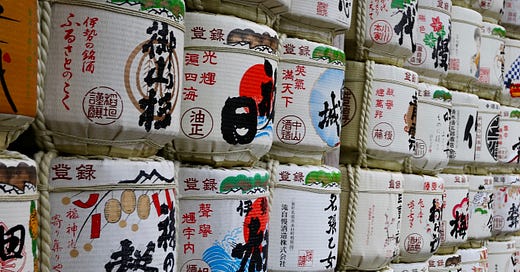



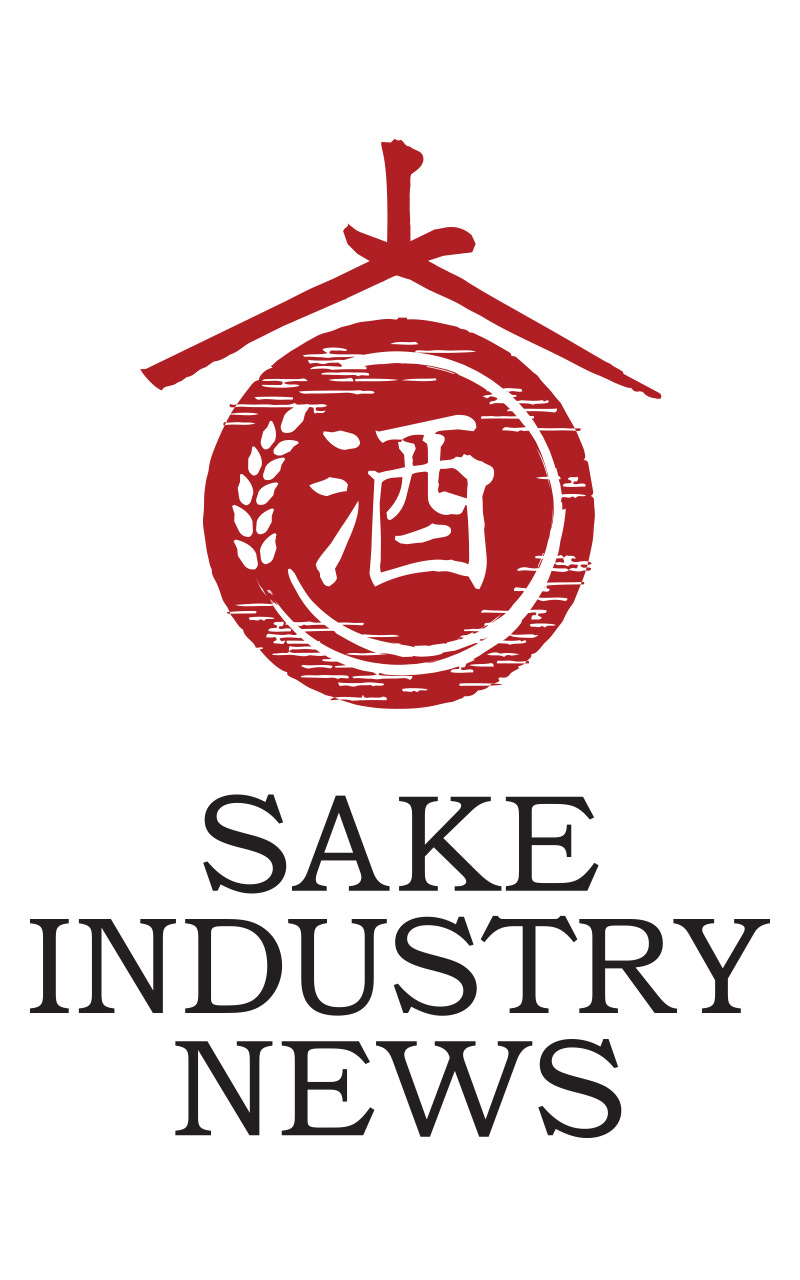
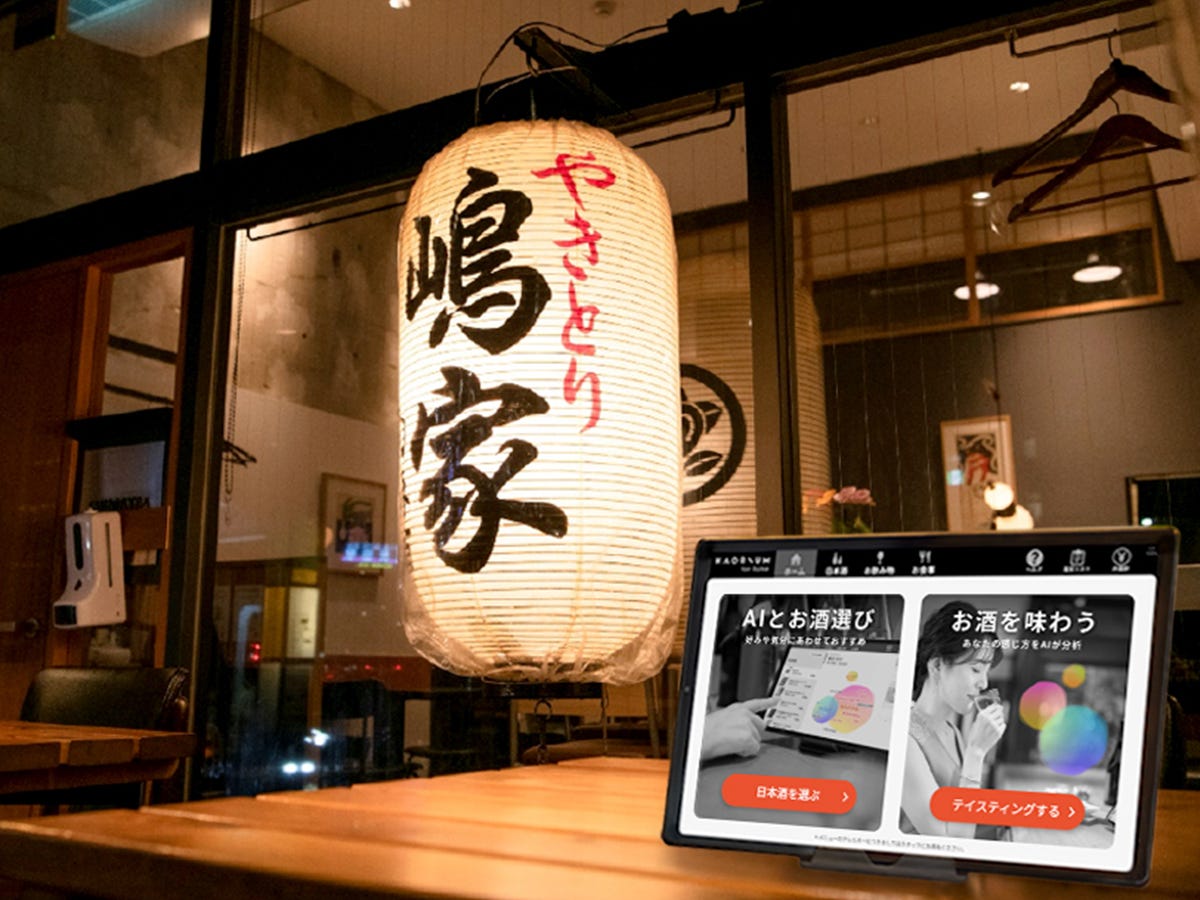

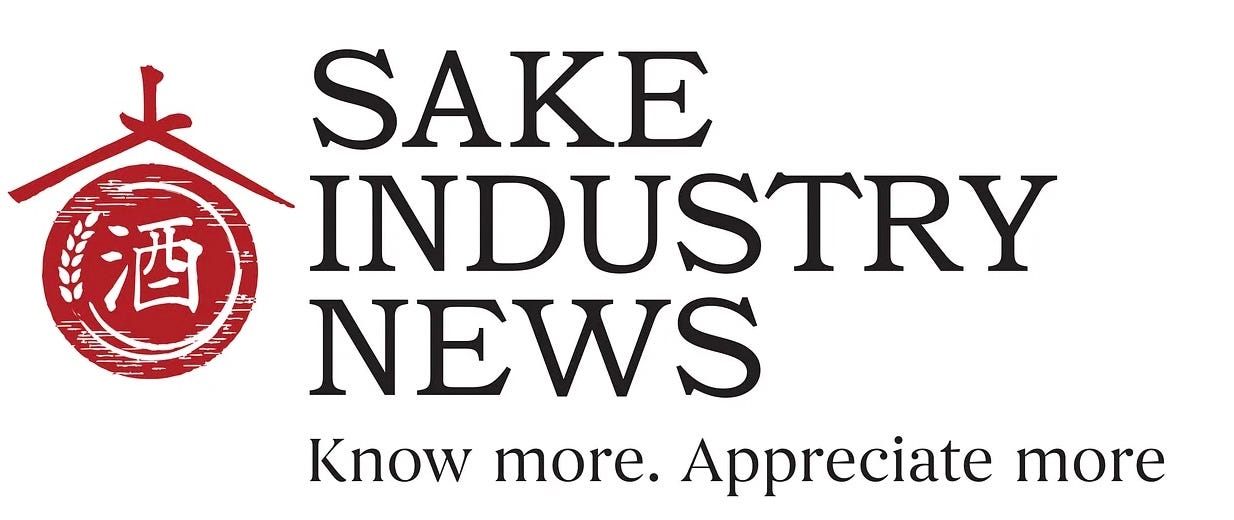
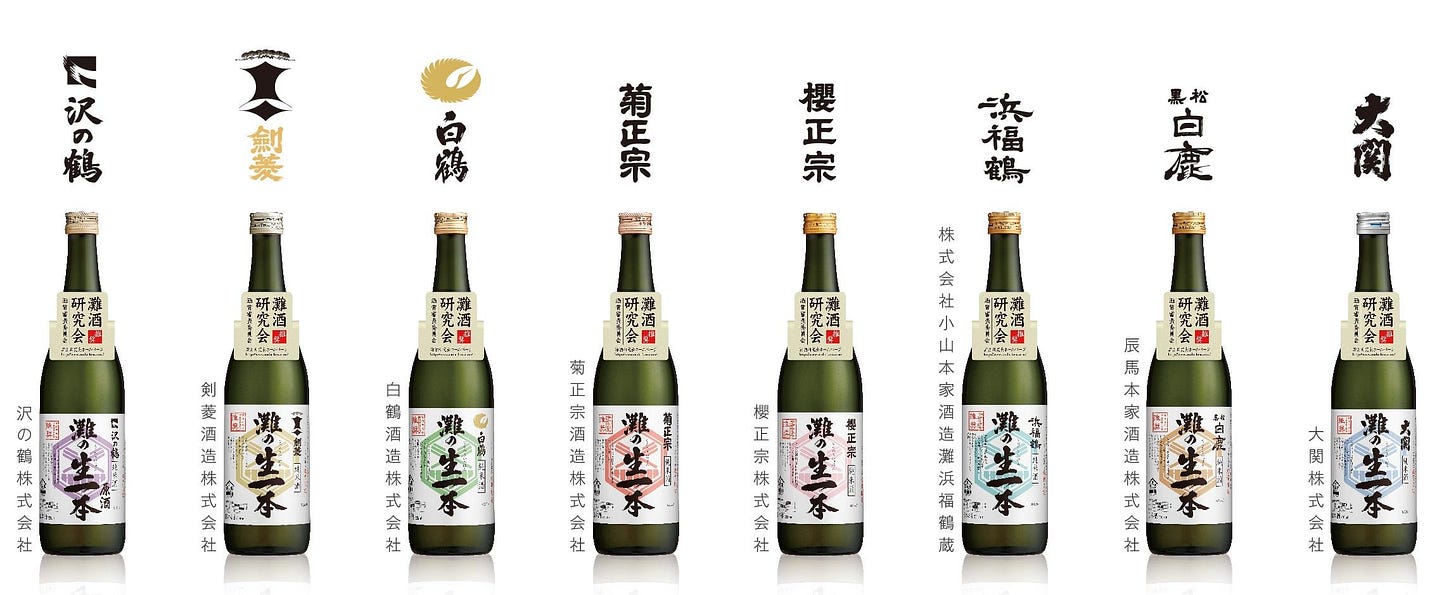


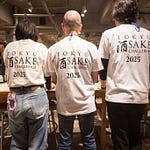





Share this post